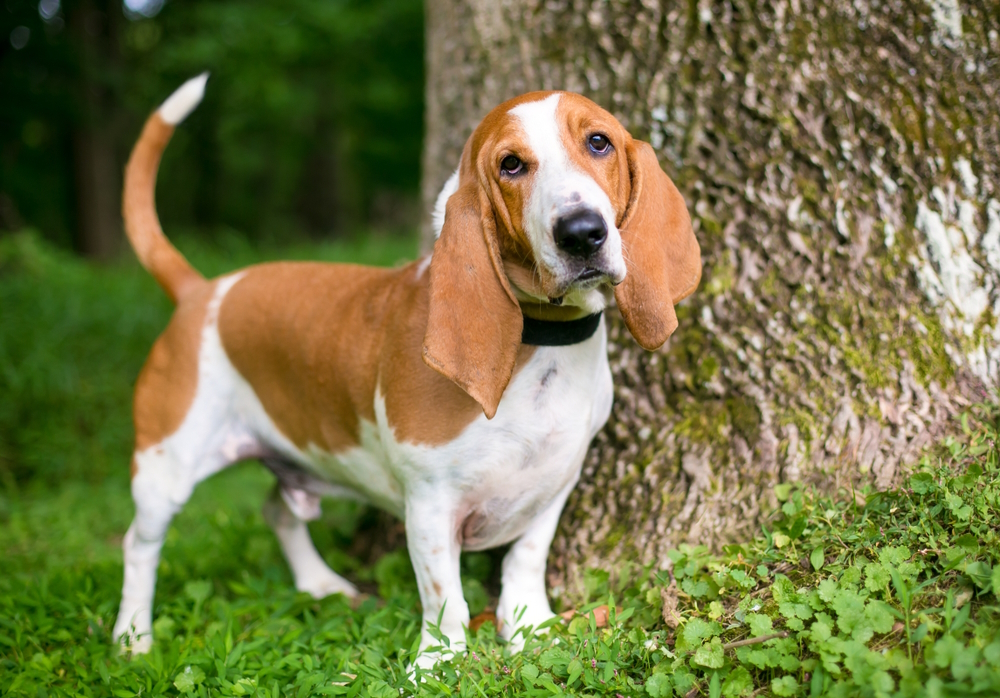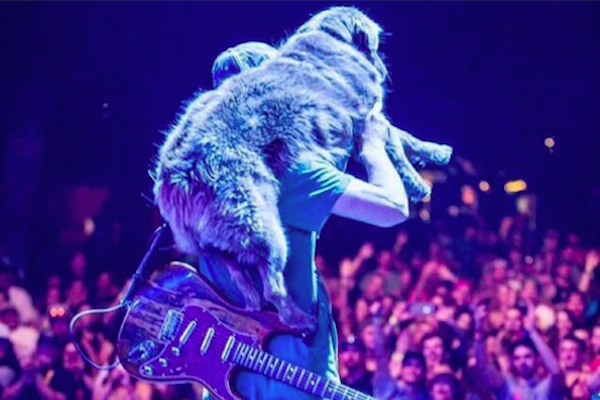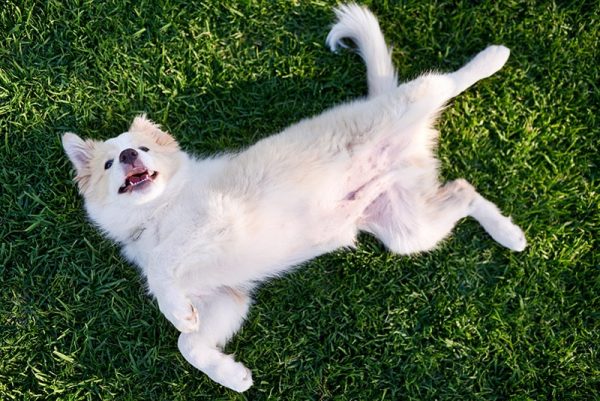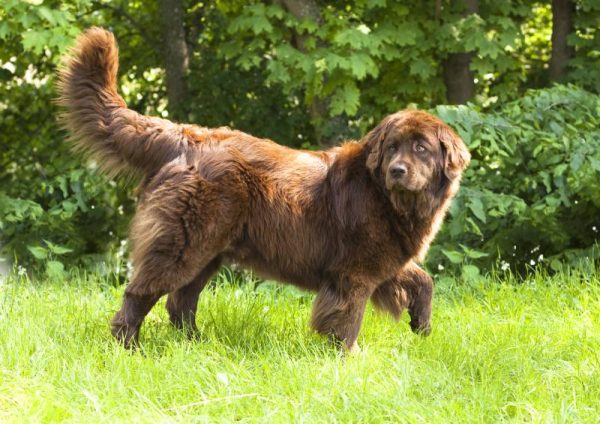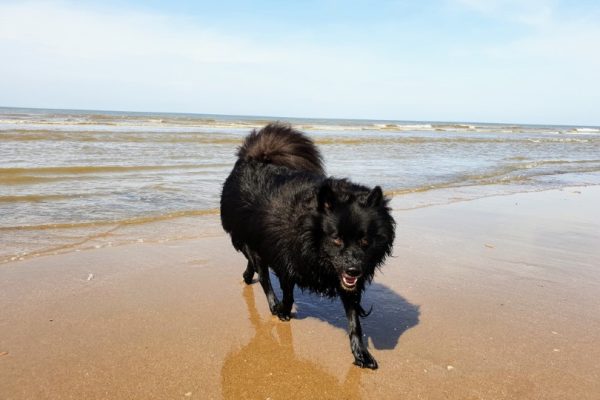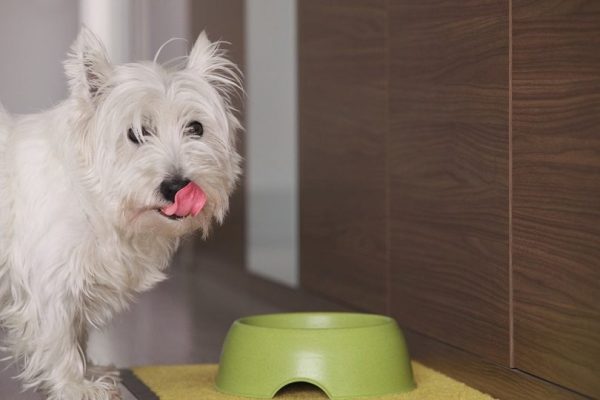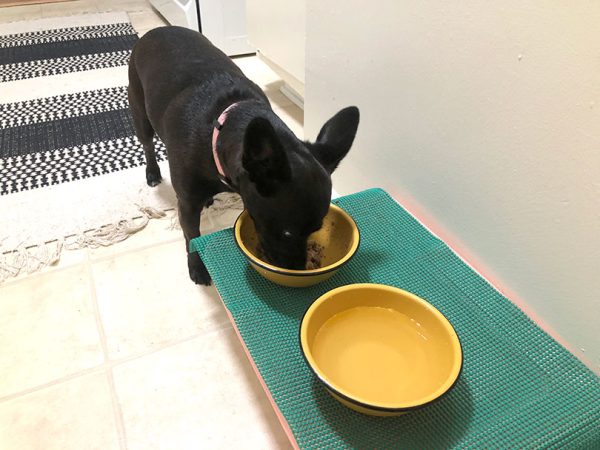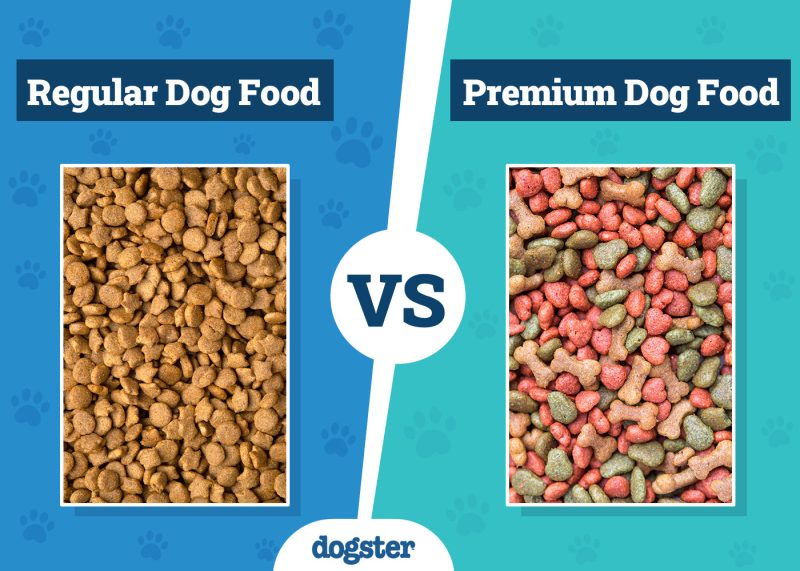In this article
Separation anxiety is a common problem for many dog owners. Dogs with separation anxiety become extremely anxious when left alone and may exhibit destructive behaviors, excessive barking or howling, and even self-harm through overgrooming, licking, and chewing themselves.
It can be a stressful and challenging situation for both the dog and their owner, especially if you spend a great deal of time at work, which causes many people to wonder if there are any breeds that don’t mind staying home alone.
Although no dog should be left at home alone for extended periods of time, there are some breeds that are more content with their own company than others, so keep reading as we list them here so you can see if one will be right for your home.

The 16 Dog Breeds With Low Separation Anxiety
1. Basset Hound
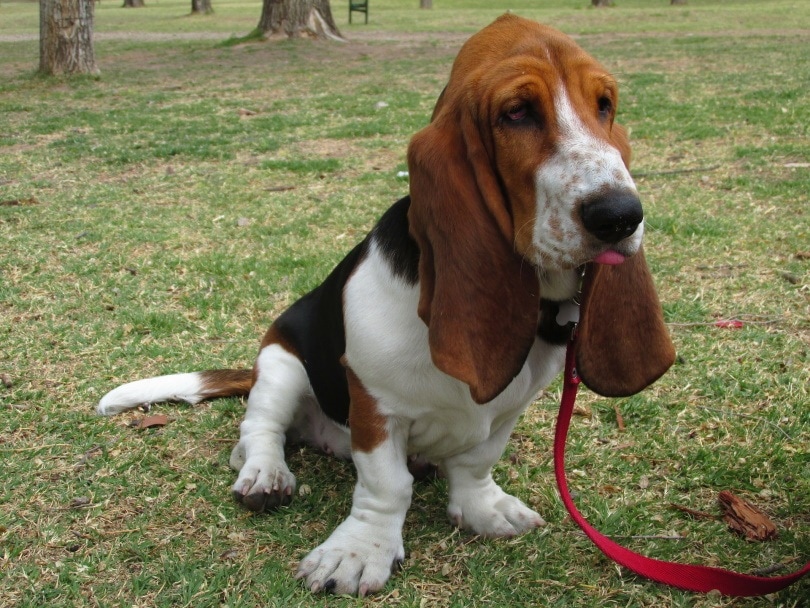
The Basset Hound is known for their long, floppy ears and soulful eyes. They are a medium-sized breed with a calm and friendly temperament, making them excellent family pets. Basset Hounds are known for being headstrong and independent, and they have a low tendency for separation anxiety and can tolerate being alone for several hours.
2. French Bulldog
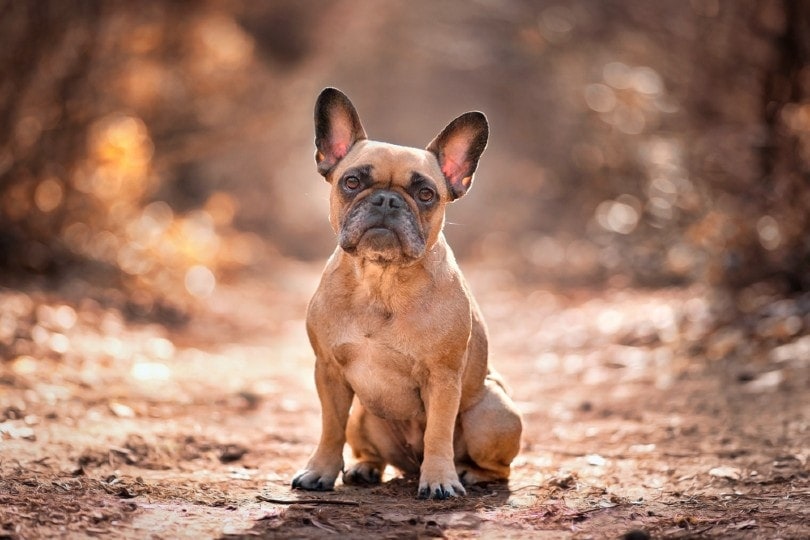
The French Bulldog, also known as a Frenchie, is a small breed that is popular for their cute and affectionate personality. Their muscular bodies and distinctive bat-shaped ears give them a unique look. French Bulldogs can adapt well to living in apartments or smaller spaces.
Although the French Bulldog is sometimes referred to as a “Velcro dog” that wants to follow their owner everywhere they go, they are also quite content entertaining themselves or in the company of other pets, so they can usually be left alone for several hours without stress.
3. Maltese
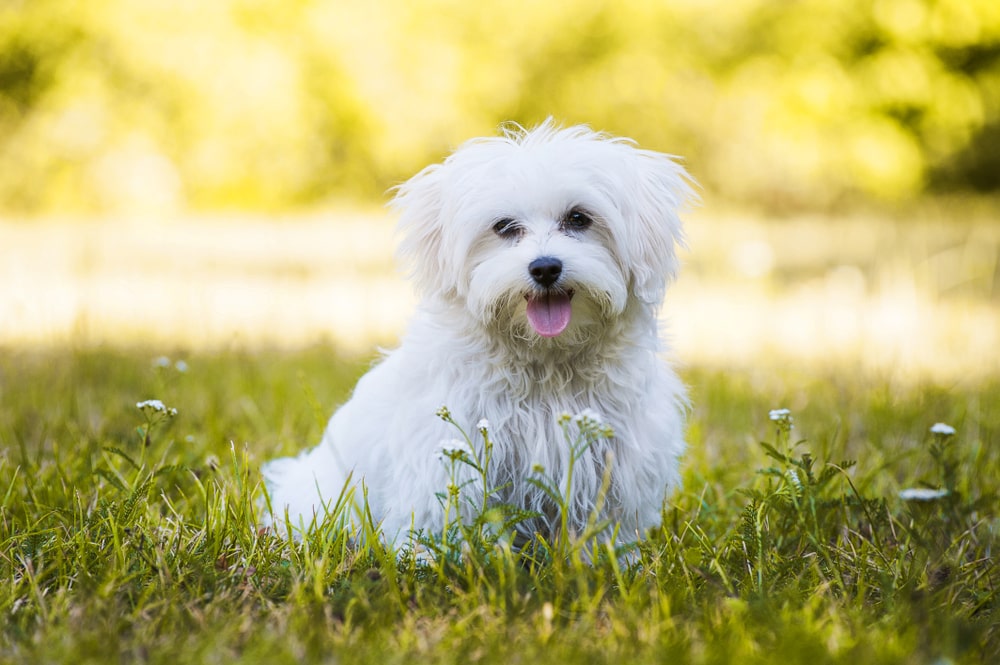
The Maltese are a small breed known for their long, silky white hair and lively personality. They have a gentle and affectionate temperament, which makes them popular as companion dogs, and they can tolerate being alone for several hours.
A classic lapdog, the Maltese also enjoys a long nap and making a nest in their beds. If you provide them with a cozy crate or small room to call their own, they will curl up and sleep the day away in your absence.
4. Greyhound
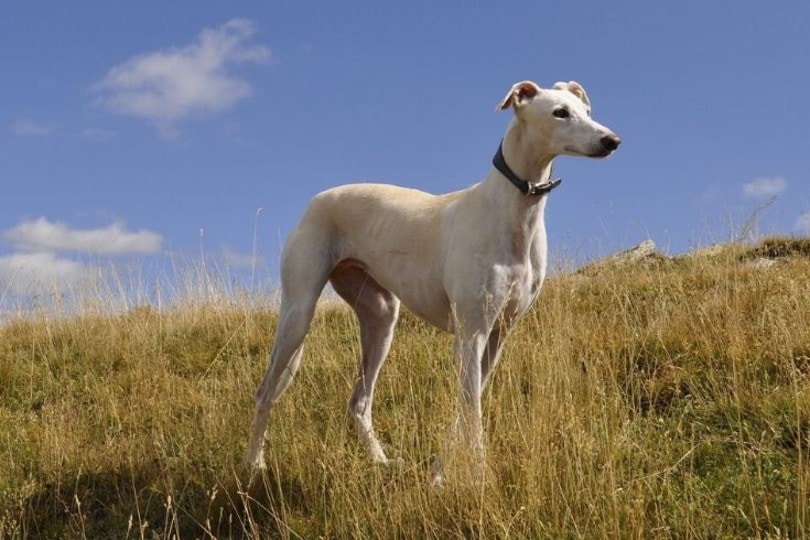
The Greyhound is a large breed that is known for their speed and gentle and affectionate temperament. Although they were bred for racing, these dogs are real couch potatoes in a home, and a comfortable and supportive bed will keep them happy for hours on end.They can be alone for long periods if they have access to food, water, and shelter.
5. Pug
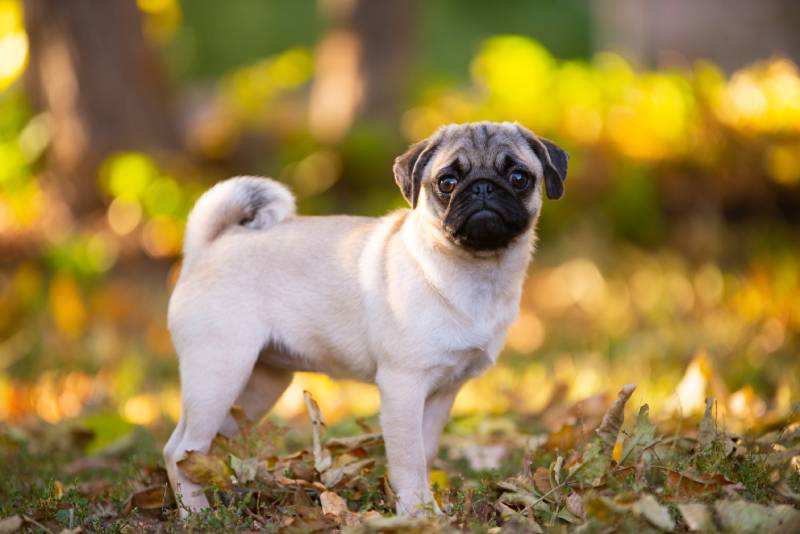
The Pug is a small breed with a wrinkled face and curly tail. They have a playful and affectionate temperament that makes them popular as companion dogs, and they have a low tendency for separation anxiety.
Like some of the others on our list, they do love to spend time with (or on) their owners, but they also enjoy some “me time,” making them suited to home life and being left alone for several hours if needed.
6. Lhasa Apso
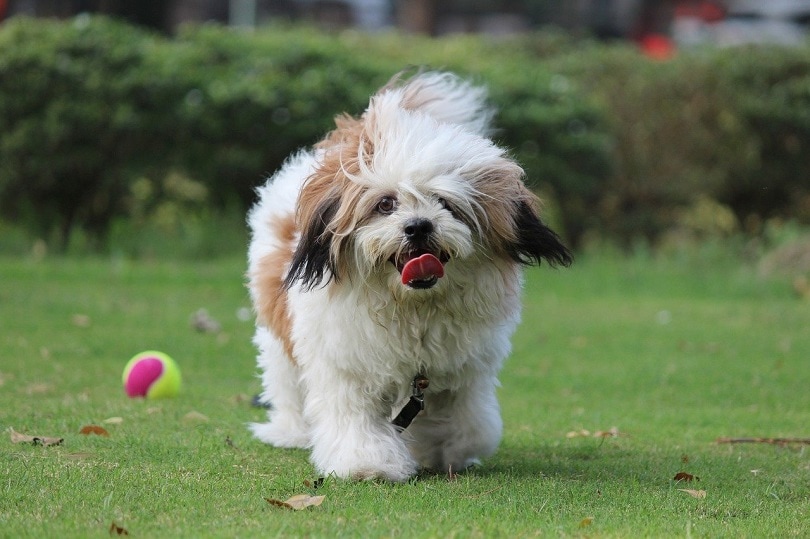
The Lhasa Apso is a small breed with a long, thick coat and lion-like appearance. They have a calm and independent temperament that makes them excellent companion dogs. They also have a low tendency for separation anxiety, so they can be alone for several hours without getting upset.
7. Shar Pei
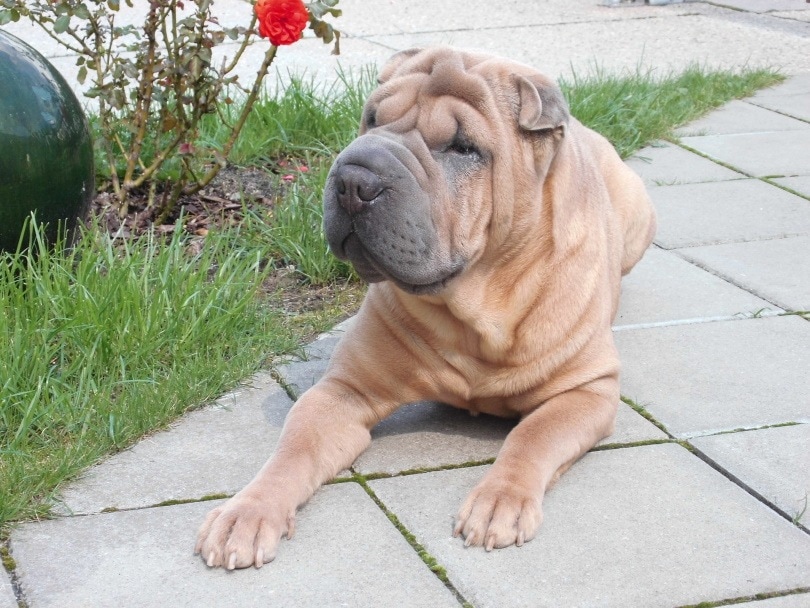
The Shar Pei is a medium-sized breed with distinctive wrinkles and a strong, muscular build. They have a calm and independent temperament that makes them excellent guard dogs, as they spend plenty of time watching over the property without getting bored.
8. Miniature Schnauzer
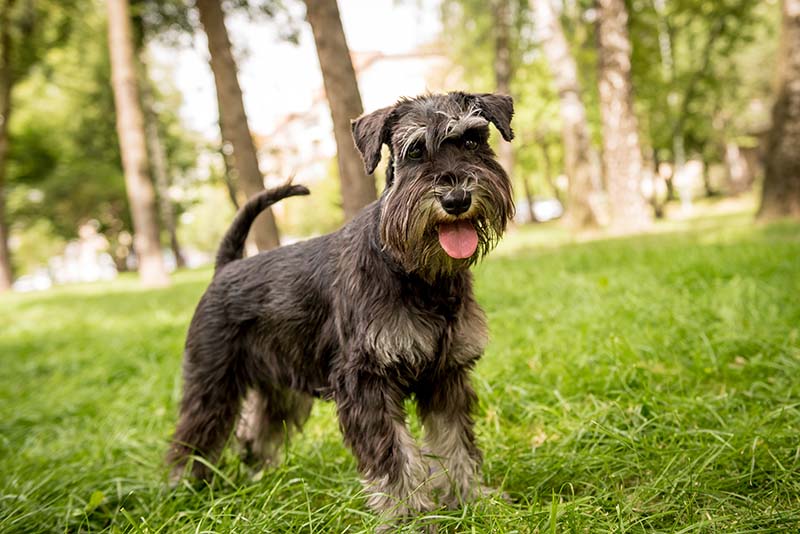
The Miniature Schnauzer is a small breed with a beard and eyebrows that give them a charming and playful look. They have a friendly and intelligent temperament, can spend several hours alone, and are well suited to apartment living.
9. Bullmastiff
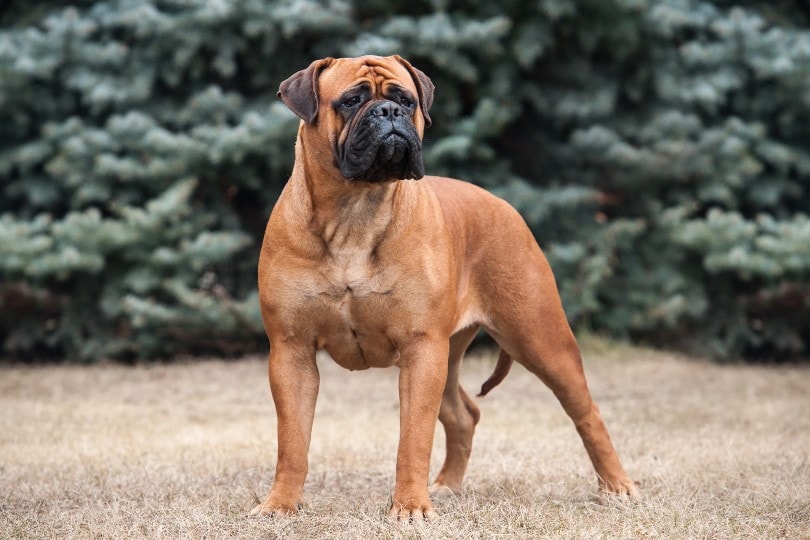
The Bullmastiff is a large breed from England with a loyal and protective temperament, making them wonderful guard dogs and family companions. Despite their imposing size, they tend to be quite laid back, and there’s a good chance that you could go out for several hours and find them in the exact spot you left them!
10. Cavalier King Charles Spaniel
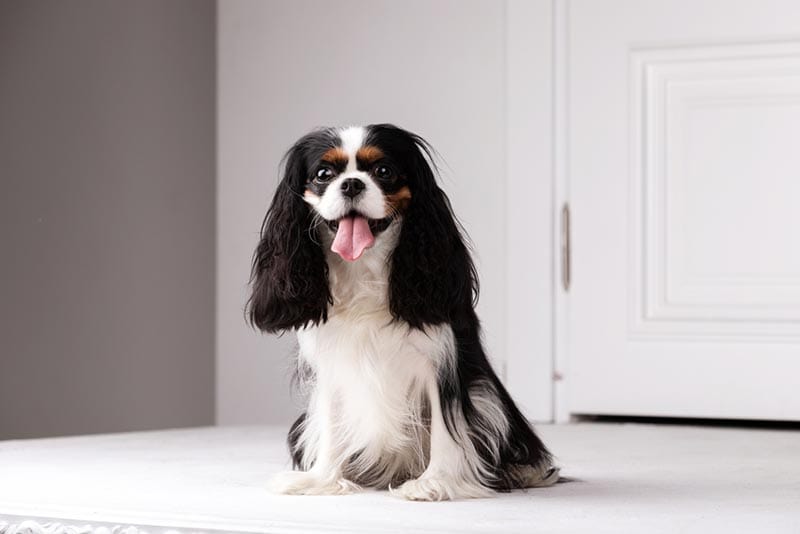
The Cavalier King Charles Spaniel is a small breed with a gentle and affectionate temperament. Despite being lapdogs, they have a low tendency for separation anxiety and can tolerate being alone for several hours.
However, they are also curious and social animals that might start to explore their environment looking for company if they get bored, and they often do best in the company of other dogs or even cats.
11. Japanese Chin
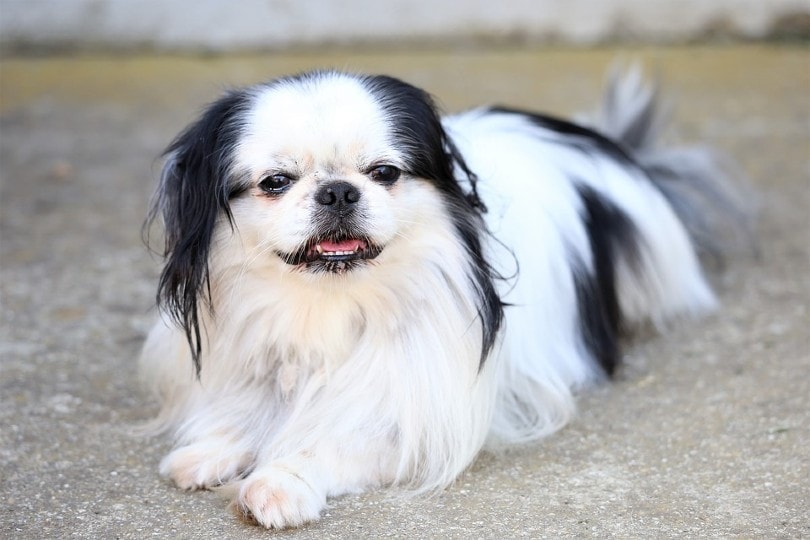
The Japanese Chin is a small breed that originated in China before Japanese breeders developed them further. They are affectionate and playful with a flat face, large eyes, and long, silky fur. Japanese Chins can tolerate spending time at home alone as long as they have a few toys to play with while you’re gone.
12. Poodle
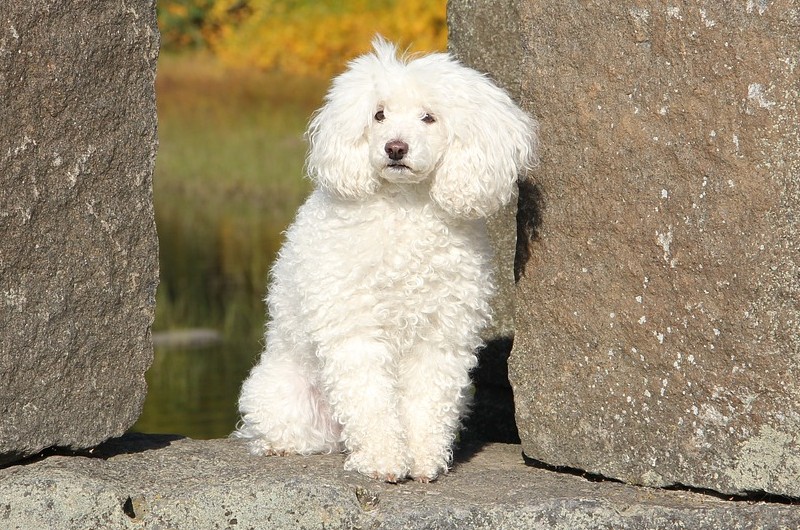
The Poodle is a highly intelligent and elegant breed with a hypoallergenic coat that sheds little and is ideal for those with allergies. Poodles are also known for their loyalty and trainability, making them popular for families and as show dogs.
They can be left alone as long as there is room to move around and plenty of food and water available.
13. Havanese
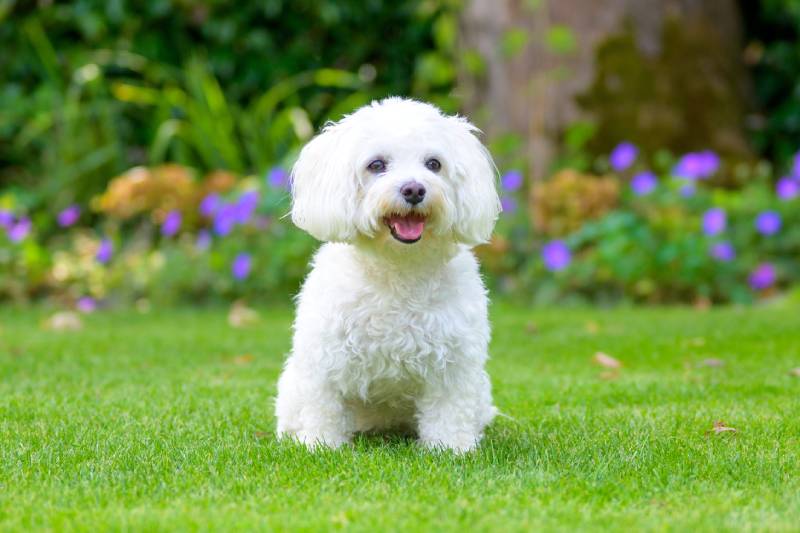
The Havanese is a small breed from Cuba with a silky, soft coat and friendly personality. These dogs are often called “Velcro dogs” because they tend to stick close to their owners and follow them everywhere they go.
However, despite that desire to stay close, Havanese have a low tendency for separation anxiety and won’t mind sitting home alone while you go to work.
14. Basenji
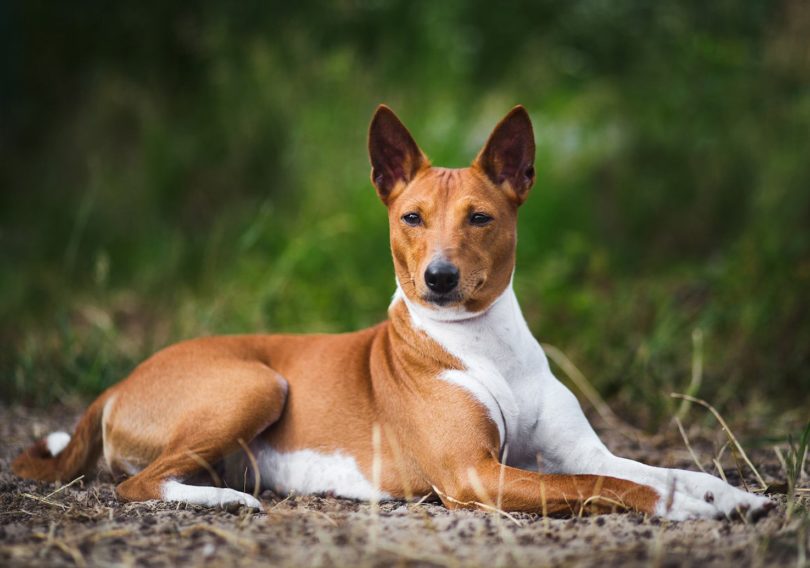
The Basenji is a small African breed that is quite popular due to their unique yodeling or “baroo” vocalization. They have an independent and curious temperament that can sometimes make them a bit challenging to train, but they are also intelligent, and with proper training, they can learn to stay home alone for several hours at a time, provided they are given activities and toys to occupy their minds.
15. Shiba Inu
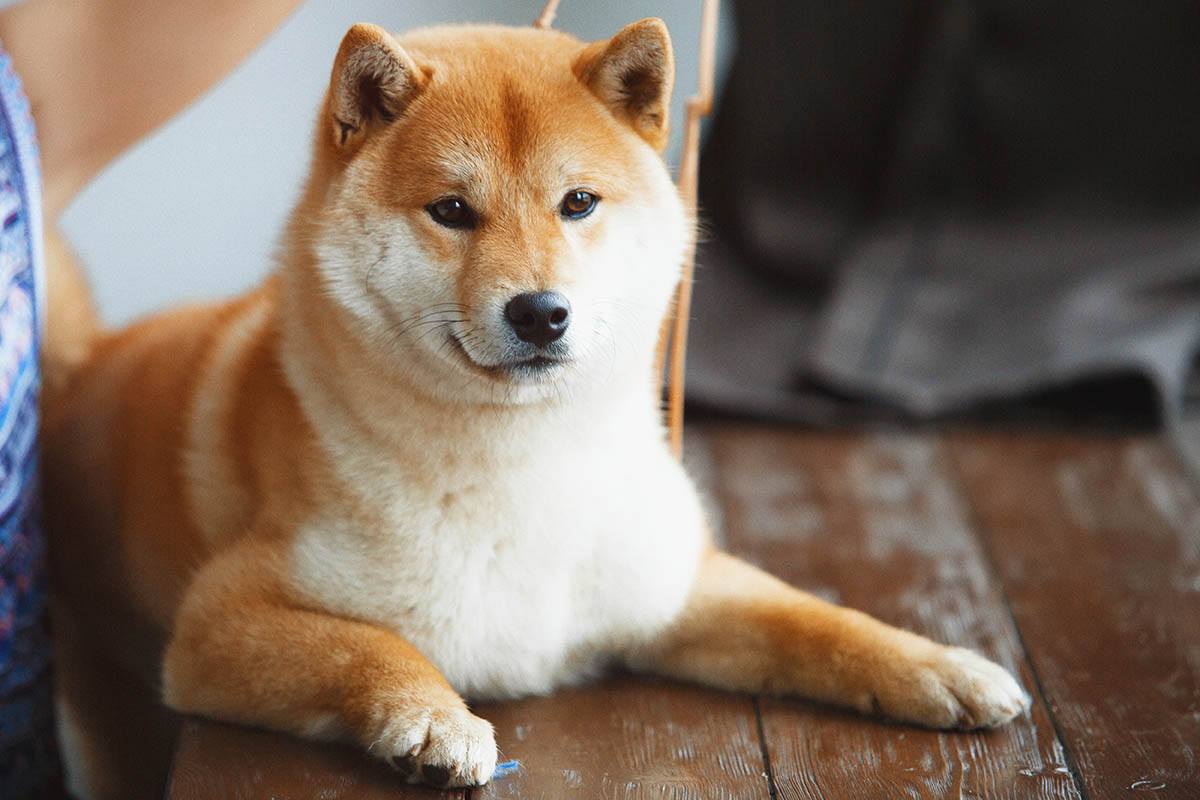
The Shiba Inu is a small to medium-sized breed that is native to Japan. They have a lively and independent temperament and a slight tendency for separation anxiety, but they are quite intelligent, and with proper training and socialization, they can learn to tolerate being alone for moderate periods of time.
16. Chow Chow
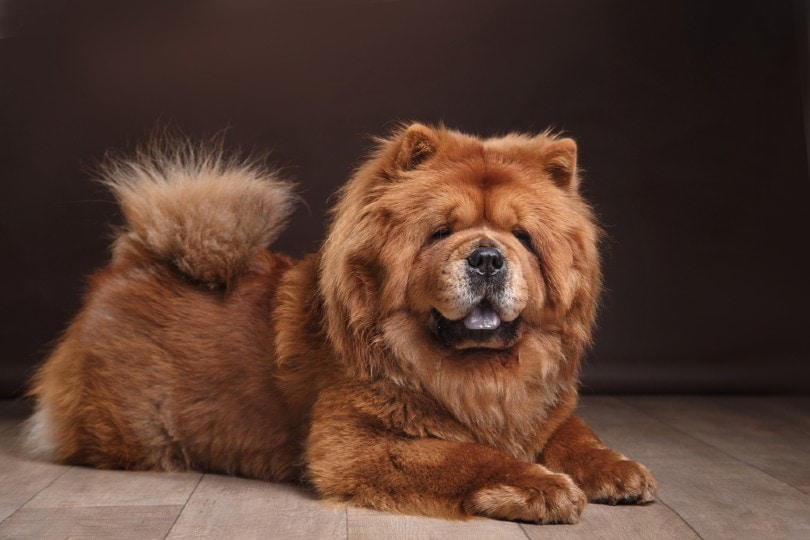
The Chow Chow is a medium to large breed from China. They have thick fur, a blue-black tongue, and a wrinkled face, and many owners describe them as loyal and independent dogs. Chow Chows have a reputation for being somewhat aloof, but they are also very intelligent and loving. They can be taught to spend longer periods alone, but they should be given toys or puzzles to help pass the time.

Tips for Helping Your Dog Deal With Separation Anxiety
- Start by leaving your dog alone for short periods, gradually increasing the duration as they get more comfortable, to help them adjust to being alone and reduce their anxiety.
- Practice leaving your dog alone for a few minutes and then returning, gradually increasing the time that you spend away to help your dog learn that you will always return. Don’t make a big fuss about leaving or coming back, as this teaches your dog to focus on this. If coming home is a big, exciting event, your dog is more likely to stress and pine in anticipation for your return.
- Create a safe and comfortable space for your dog to rest while you’re away. It can be a crate or a designated room with a bed, toys, and water.
- Consider using calming aids, such as pheromone sprays, diffusers, or natural supplements, if your pet is having an especially hard time with you leaving.
- Ensure that your dog gets plenty of exercise and mental stimulation throughout the day. This will help reduce their anxiety and prevent destructive behaviors.
- Use positive reinforcement training to establish good behavior and help your dog feel more confident and secure. Reward your dog for staying calm and relaxed when you leave and return.
- If your dog’s separation anxiety is severe, consider seeking the help of a professional dog trainer, behaviorist, or veterinarian, as they can provide personalized guidance and support to help your dog overcome their anxiety.
If you need to speak with a vet but can't get to one, head over to PangoVet. It's an online service where you can talk to a vet online and get the personalized advice you need for your pet — all at an affordable price!


Conclusion
Owning a dog comes with the responsibility of being able to spend plenty of time with them each day, and no dog should be left home alone for more than 6 to 8 hours.
There are many dog breeds that are less prone to separation anxiety than other breeds. If you are a new pet owner, the Basset Hound, French Bulldog, and Pug are all great options, as they are friendly and have a low tendency toward separation anxiety, but they do have some health conditions you need to be aware of before taking the plunge and bringing one home.
If you are an experienced pet owner, don’t rule out the breeds with a slight tendency toward separation anxiety, like the Chow Chow and Shiba Inu, as they are intelligent dogs that can easily learn how to spend more time home alone without becoming upset.
It is important to recognize that any dog of any breed can suffer from separation anxiety, including the breeds listed above. Teaching your dog to spend time on their own is an important step of training, as is providing them with a safe and secure place for them to spend their time when you are gone. Dog crates are a great tool when it comes to teaching your dog to spend time alone, and many families keep a crate up as a bedroom for their dogs long after they are needed for training.
Featured Image Credit: Mary Swift, Shutterstock

